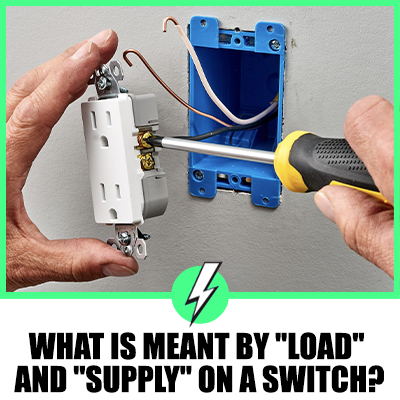What Size Wire for Static Electricity?
Static electricity is a common phenomenon where an imbalance of electric charges within or on the surface of a material occurs.
The effects of static electricity are familiar to most people because it’s something we can physically feel, see, and sometimes hear.
In industrial settings, static electricity can cause significant problems, including damage to sensitive electronic components or even creating a spark that could ignite flammable gases or dust.
To prevent these issues, proper grounding is essential.

Contents
What Gauge Wire is Used for Static Electricity?
The gauge of wire used for static electricity grounding depends on the specific application and the amount of current that could potentially need to be carried to the ground.
The wire must be capable of carrying the maximum amount of current that could be generated in the system.
What Gauge Wire is Used for Grounding?
For grounding in general, the wire gauge can vary widely depending on the application.
For residential electrical systems, for example, a common wire gauge for grounding is 10, 12, or 14 AWG (American Wire Gauge).
For larger commercial or industrial electrical systems, the grounding wire could be much larger.
What is the Minimum American Wire Gauge Size That Can Be Used for Permanent Static Ground Conductors?
The minimum American Wire Gauge size that can be used for permanent static ground conductors depends on the specific requirements of the system.
However, it’s important to note that the wire must be large enough to carry any potential static charge to ground without overheating or breaking down.
How Do You Ground Equipment for Static Electricity?
Grounding equipment for static electricity involves creating a direct, low-resistance path to the earth.
This typically involves connecting the equipment to a grounding conductor, such as a copper rod driven into the ground.
The connection is usually made using a conductive wire and can involve the use of grounding clamps or other connectors to ensure a good electrical connection.
Insights from Online Discussions
From the online discussions, it’s clear that the size of the grounding conductor for static electricity is a topic of interest for many people.
One of the key takeaways is the importance of ensuring a good, low-resistance connection to the ground.
This often involves using a wire of sufficient gauge to carry any potential static charge without overheating or breaking down.
In one discussion on the Mueller Electric blog, the importance of proper grounding in preventing workplace hazards such as explosions and fires due to static discharge is emphasized.
The blog post discusses how many places ground with heavy-duty cast clips, solid copper clips, and clamps of all shapes and sizes connected to a wire and attached to drums and pipes throughout a storeroom, plant floor, or pumping stations.
These are referred to as grounding assemblies or “straps.”
The blog post also provides a step-by-step guide on ensuring that something is properly grounded.
It starts with determining that access to a fully grounded grounding pin or buss bar is readily available.
This will be necessary for a solid true ground and will act as the backbone of the grounding system.
The type of cabling used from connection to connection (grounding pin / buss bar to clamp or clip) will depend on the environment being grounded.
Conclusion
In conclusion, the size of wire used for static electricity grounding depends on the specific application and the potential amount of current that could need to be carried to the ground.
It’s essential to ensure a good, low-resistance connection to the ground to effectively dissipate static electricity and prevent potential issues such as damage to sensitive electronic components or ignition of flammable gases or dust.
Additional Information for UK and US Audience
When it comes to grounding static electricity, both the UK and the US follow similar principles.
The wire gauge used for grounding depends on the specific application and the potential amount of current that could need to be carried to the ground.
In the US, the American Wire Gauge (AWG) system is used to denote wire size.
For residential electrical systems, a common wire gauge for grounding is 10, 12, or 14 AWG.
For larger commercial or industrial electrical systems, the grounding wire could be much larger.
In the UK, the British Standard Wire Gauge (SWG) system is used, which is slightly different from the AWG system.
However, the same principles apply – the wire used for grounding must be capable of carrying the maximum amount of current that could be generated in the system without overheating or breaking down.
It’s important to note that regardless of the country, proper grounding is essential to prevent issues caused by static electricity, such as damage to sensitive electronic components or ignition of flammable gases or dust.
Therefore, it’s always recommended to consult with a professional electrician or engineer when designing a grounding system for static electricity.





